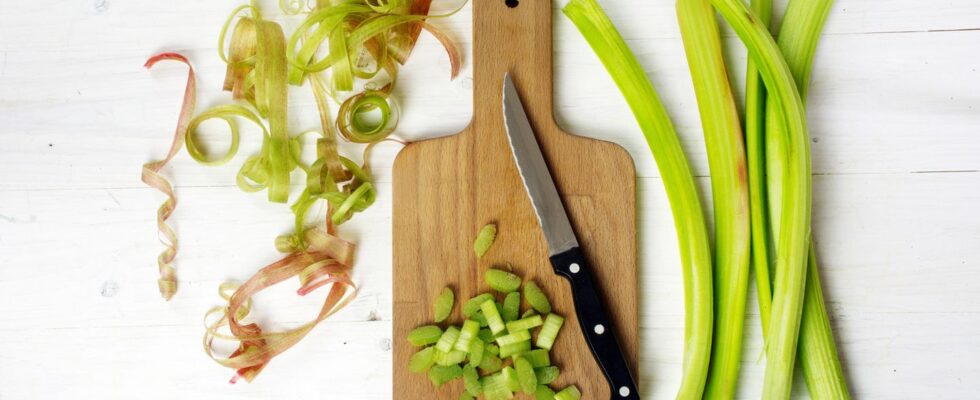Peel rhubarb
Why the rhubarb peel disturbs the enjoyment
© Maren Winters / Shutterstock
Opinions differ on whether or not you should peel rhubarb. But there are many good reasons to remove the rhubarb skin.
That’s why you should peel rhubarb
On the one hand it is annoying when the fibrous rhubarb skin gets caught between your teeth, on the other hand it is unhealthy to eat rhubarb unpeeled. Rhubarb, especially the leaves and skin oxalic acid. This fruit acid can be found in high concentrations harmful and even lead to symptoms of poisoning. It reacts with calcium from bones and teeth to form calcium oxalate, which can result in kidney and bladder stones.
Oxalic acid in rhubarb is also responsible for dulling teeth. You can avoid this by doing something baking soda into the compote, because it neutralizes part of the oxalic acid.
1. Clean the rhubarb
Before you start peeling the rhubarb, remove the rhubarb, if any leaves of stick vegetables. The oxalic acid content is highest in the leaves, which is why they are considered to be inedible. Only the edible stems are used. Then rinse the rhubarb under running water.
2. Cut off interfaces
The interfaces at the base of the leaf and stem dried up quickly. Roughly cut them off. Then the fibers of the rhubarb skin can be easily grabbed with the knife and you can start peeling the rhubarb.
3. Peel the rhubarb
The rhubarb skin is like a thin skin. The older the rhubarb stalks, the more strawy and woody they become and the firmer the rhubarb skin. Depending on the rhubarb variety, the rhubarb skin is greenish or red in color. To peel, grab the fibers of the rhubarb skin with one small kitchen knife at the bottom of the rhubarb stalks and pull them upwards. You can also use one for particularly robust rhubarb skins peeler use. Peel the stalks all around until there are no longer any threads of the rhubarb skin hanging from the rhubarb. If you cut the sticks into rhubarb pieces for compote or cake, for example, it doesn’t matter so much if you overlooked something when peeling the rhubarb.
Now you can cook the peeled rhubarb and process it further, for example into rhubarb compote, rhubarb jam or rhubarb cake.
For storage, you can freeze rhubarb or boil rhubarb. For example, after the end of the rhubarb season on June 24th, you can enjoy a rhubarb crumble with crunchy crumbles or a rhubarb meringue cake.
Does your grandma also rave about the fact that she used to dip the young rhubarb stalks from her own garden in sugar and eat them raw? And even velvet rhubarb peel. We explain why eating rhubarb raw is not a good idea.
Grandma’s household tip
Rhubarb peel is great for aluminum pots to clean. Simply boil the rhubarb peel (or rhubarb leaves) with a little water and let it steep.
But Caution: Never cook rhubarb in an aluminum baking pan or saucepan. The oxalic acid in the rhubarb reacts with the aluminum and dissolves it from the cookware.
